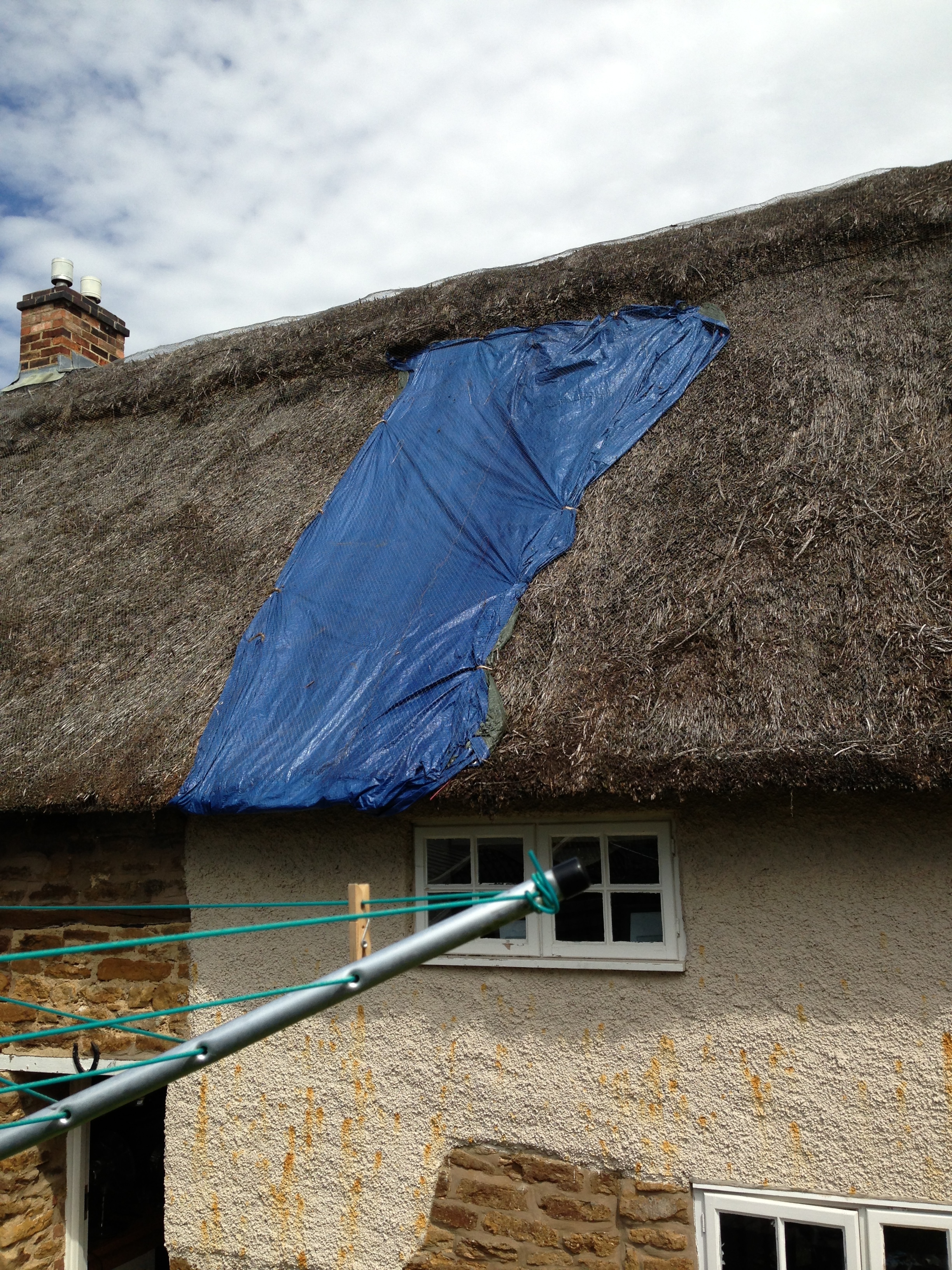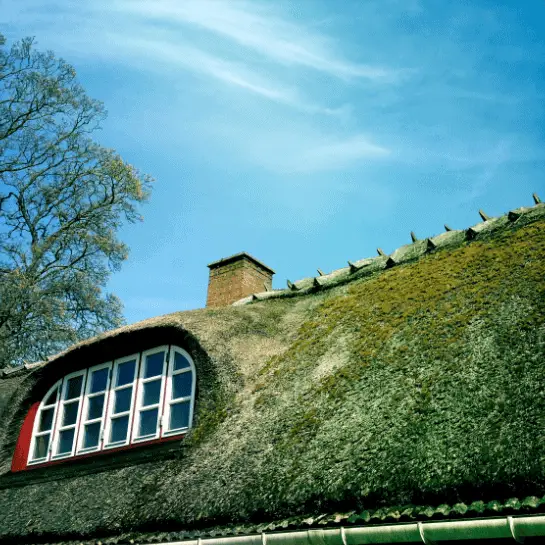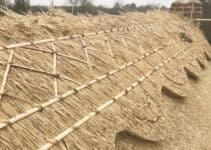Believe it or not, it’s a common question with an unexpected answer. Do thatched Roofs leak? Thatched roofs do not leak, they are actually better at keeping water out than many other roofing options. But that doesn’t mean they don’t leak at all.
Thatch is a natural and environmentally friendly roofing material that keeps buildings cool in hot weather, warm in cold weather, dry in heavy rainstorms.
Are Thatch Roofs Waterproof
The materials used to thatch a roof are not only renewable but also waterproof. They contain no chemicals and by their own natural structure make them waterproof.
Long-strawed water reed is one of the most common plants used for thatching, and it’s also the straw used for the best roofs.
The plants used to create water reed are native to marshy areas and are extremely resistant to moisture. Their outer cells are tightly packed, which allows them to stand up against high winds and rain.
The inside of the plant’s hollow stems is naturally waterproof, which means rainwater will be repelled from entering whatever it’s used to make—in this case, a roof.
Stems are tightly packed together, secured by thatching spars and overlap on their outer walls in order to keep water out of the straw bundles.
When enough water reed is bundled together, the weight of the bundle makes it impossible for water to get through. This prevents the roof from leaking, even when it rains non-stop for 3 days straight!
The only way water ever gets into a straw bundle is when air enters at either end of the bundle where there aren’t any overlapping stems or the stem ends aren’t completely bundled together.
This typically happens when builders haven’t properly tied the ends together or when a bird has decided to build its nest inside one.
However, thatch also deteriorates or gets damaged in other ways over time. Hence the potential for these kinds of roofs to leak.
How Do Thatched Roofs Keep Water Out?
In another article we discuss how thatched roofs keep out rain. But we will briefly explain how this happens as it relates closely to thatched roofs leaking.
Thatched roof can keep water out due to the way they are constructed, the materials used, and the natural properties of the thatching material. Here’s a brief explanation of how thatched roofs keep water out:
Materials: As mentioned, thatch materials are water-resistant and have natural fibers that repel water, making them ideal for roofing.
Steep pitch: Thatched roofs are constructed with a steep pitch (usually between 45 and 50 degrees). Which allows water to run off the roof quickly, preventing it from soaking into the thatch.
Overlapping layers: Thatching involves layering the material in an overlapping pattern, similar to the scales of a fish. Each layer of thatch covers the one below it, preventing water from penetrating the roof.
Thickness: A thatched roof has a depth of about 12-24 inches (30-60 cm). This density of the thatch helps to create a barrier that keeps water out.
Swelling and weathering: When exposed to moisture, the thatching materials tend to swell, which can help to create a tighter seal and further improve the roof’s water-resistant properties. Over time, the outer layers of the thatch also weather and become more compacted, further enhancing its water-repellent qualities.

Is it Common for a Thatched Roof to Leak?
Thatched roofs need well-maintained and if they are not, they will leak. This can also happen if they are often not fitted perfectly. Some areas of the roof may be more prone to leak than others.
Thatch itself will also deteriorate over time and become less water-resistant.

If you hear any noises coming from your roof, it could be an indication that you have a leaky thatch roof. Listen for dripping noises or odd cracking sounds.
Make sure to pay attention when it rains; if you hear any weird sounds, it may be an indication that your roof needs fixing.
A visual inspection of your entire roof is crucial to determining if you have a leaky thatch roof or not. Look for gaps between the layers of thatch, as well as any bulges in the top layer.
Some other signs that leaking may be occurring include parts of the roof sagging, dark patches appearing on walls and ceilings inside, water pooling in the attic, and mould or mildew on rafters or the underfelt.
How Does A Leak In The Thatch Happen?
Leaks can occur in many different ways on thatched roofs but one of the most common ways it happens is when rainwater gets under the edges of the roofing material at either side of where two surfaces meet such as tiles, or slate – called ‘the valley’.
The water then seeps through into the rafters or ceiling space inside your home and down onto whatever surface lies beneath.
Another common cause is when the ridging that separates layers of thatch can become loose or brittle. The ridging will normally have been laid before the bundles of thatch were applied to your roof, and if it is not maintained properly then water could seep in between these ridges.
The corners of thatched roofs are particularly vulnerable to leaks, especially when the roof is steep.
The reason for this is that these areas are not able to be filled out properly by bundles of thatch, and will often need an extra waterproof layer applied in order to help protect your home effectively.
Other common culprits are birds or squirrels and shoddy roof repairers who are not true craftsmen.

What Can You Do To Avoid A Leaky Thatch Roof?
Your roof should be regularly inspected and maintained to not just protect against the rain, but also against birds, squirrels, bugs, and other pests that can cause a lot of damage.
Getting a fine-mesh netting will protect the roof from these creatures and the damage they can cause.
Coating the straw with a copper sulphate solution called ‘bluestone’ helps deter moss and algae from growing and also moisture.
You can buy bluestone here:
Another method is to use copper or lead flashing, which can be bent over the edge of your rafters (traditionally with the help of heat).
It then curves under your thatch – pressing tightly against it – and then you put another piece on top to close the gap at the bottom.
Do Thatch Roofs Leak?
It’s important to keep on top of the maintenance and look out for signs of leaks as soon as possible to nip them in the bud.
Thatch has a reputation as being a fantastic water repellent (one of the reasons why when these roofs catch fire, the flames are so hard to extinguish) but even the best thatched roof will soon leak if not properly maintained.





